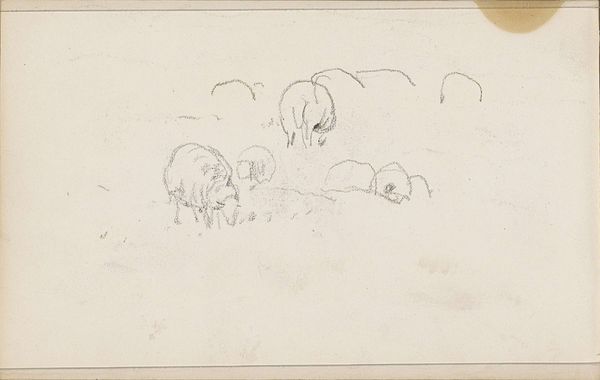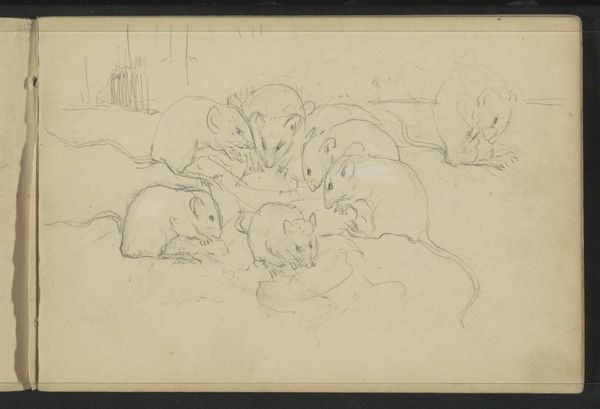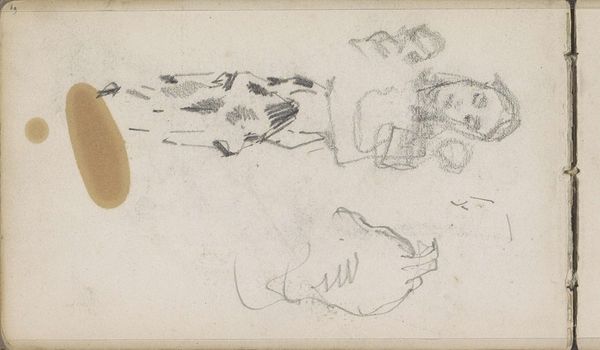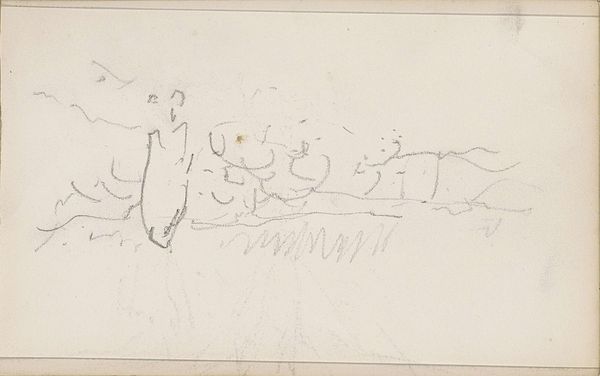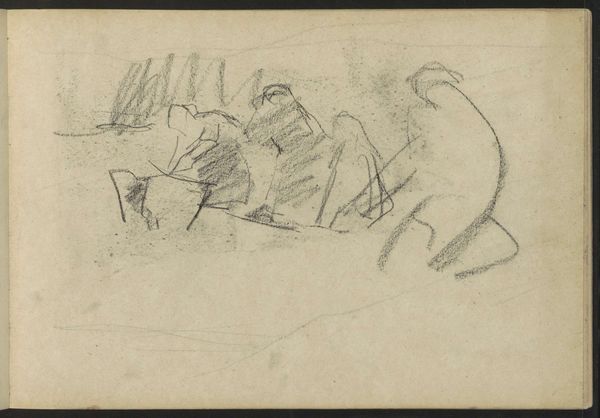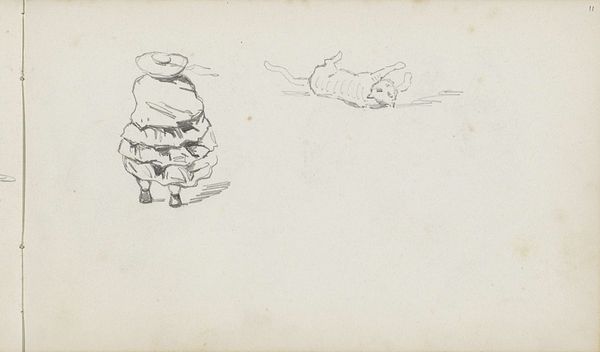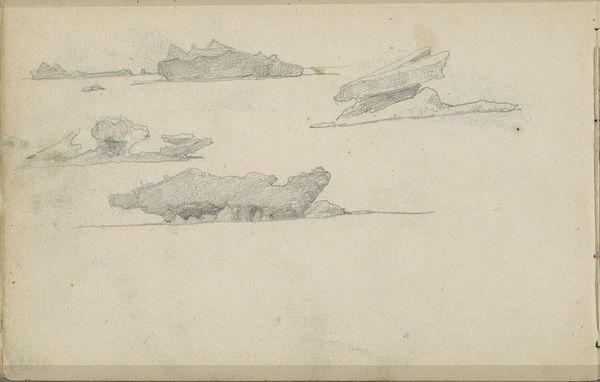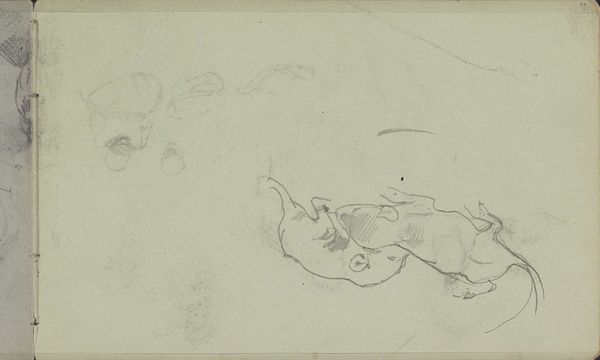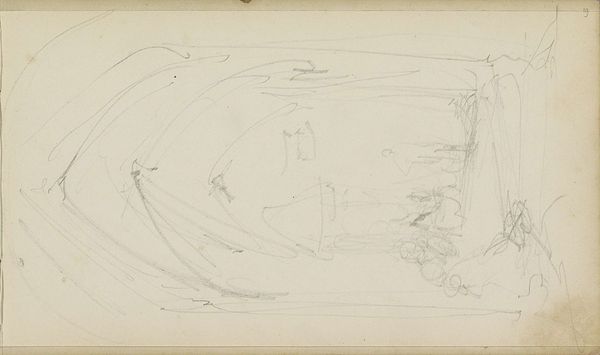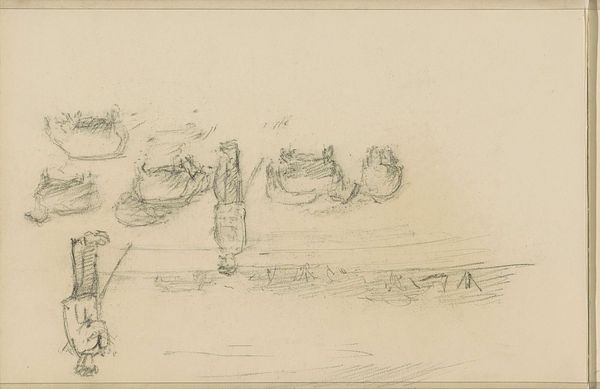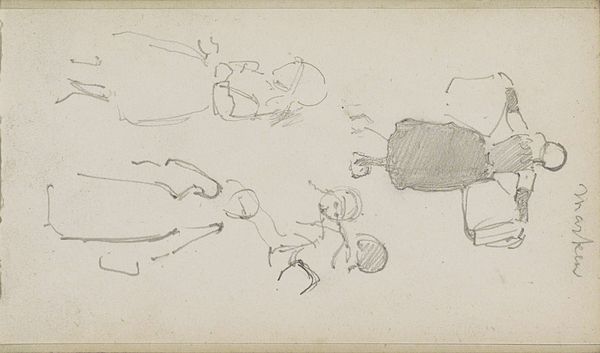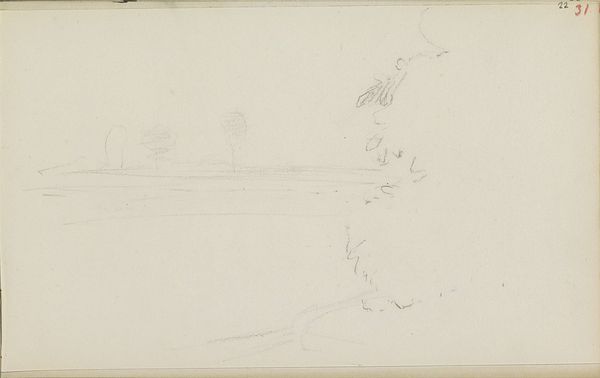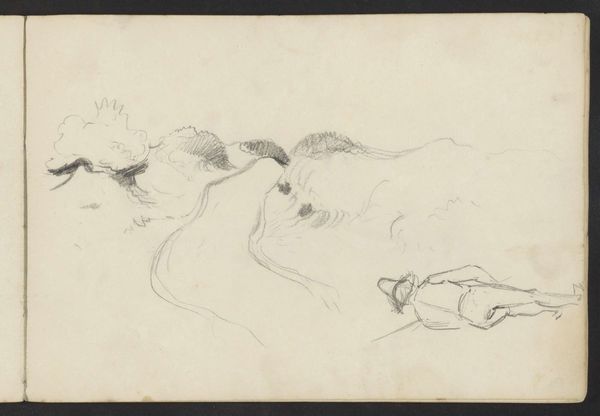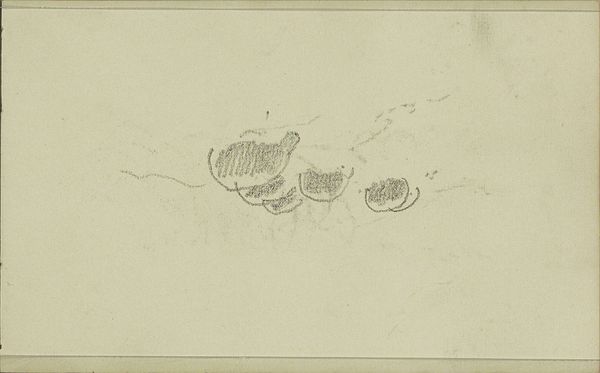
drawing, paper, pencil
#
drawing
#
pencil sketch
#
landscape
#
paper
#
pencil
#
realism
Copyright: Rijks Museum: Open Domain
Editor: So this is "IJsbergen," or "Icebergs," a pencil drawing on paper by Louis Apol from 1880. There's a stark, almost ghostly quality to these shapes emerging from the sea. What do you make of the composition here? Curator: The formal elements are indeed striking. Apol’s use of pencil, primarily, lends itself well to the subject: ice. The medium echoes the qualities of that which it depicts, sharing its cool pallor, ephemeral qualities, and associations with fragility. The almost clinical arrangements of the icebergs on the page invite the viewer to contemplate their geometry as objects of observation. Do you perceive any compositional tension in the distribution of these iceberg forms across the plane of the paper? Editor: I notice they are all different sizes and slightly misaligned; they're not uniformly spaced, creating some imbalance. Curator: Precisely. This orchestrated imbalance contributes to a dynamic visual field. Furthermore, observe the subtle gradations in tone achieved through careful application of pencil. The artist captures a range of textures, from the smooth surfaces of the ice to the subtle ripple of the water's surface. Do you see how these contrasts activate the eye and evoke a haptic response? Editor: Yes, it makes me want to reach out and touch them, even though it's just a drawing! It's like the shapes become tangible through the shading and light. Curator: And consider the white of the paper itself. It isn’t merely a ground, but an active element representing the negative space, contributing to the sense of scale and the isolation of these forms. The emptiness is not passive but imbued with potentiality. Apol asks us to consider the formal relationship between line, tone, and void. Editor: That's a perspective I hadn't considered; I was so focused on the icebergs themselves. Now I see the negative space playing just as important a role. Thanks! Curator: Indeed. Art resides as much in what is not present as in what is manifestly shown.
Comments
No comments
Be the first to comment and join the conversation on the ultimate creative platform.
